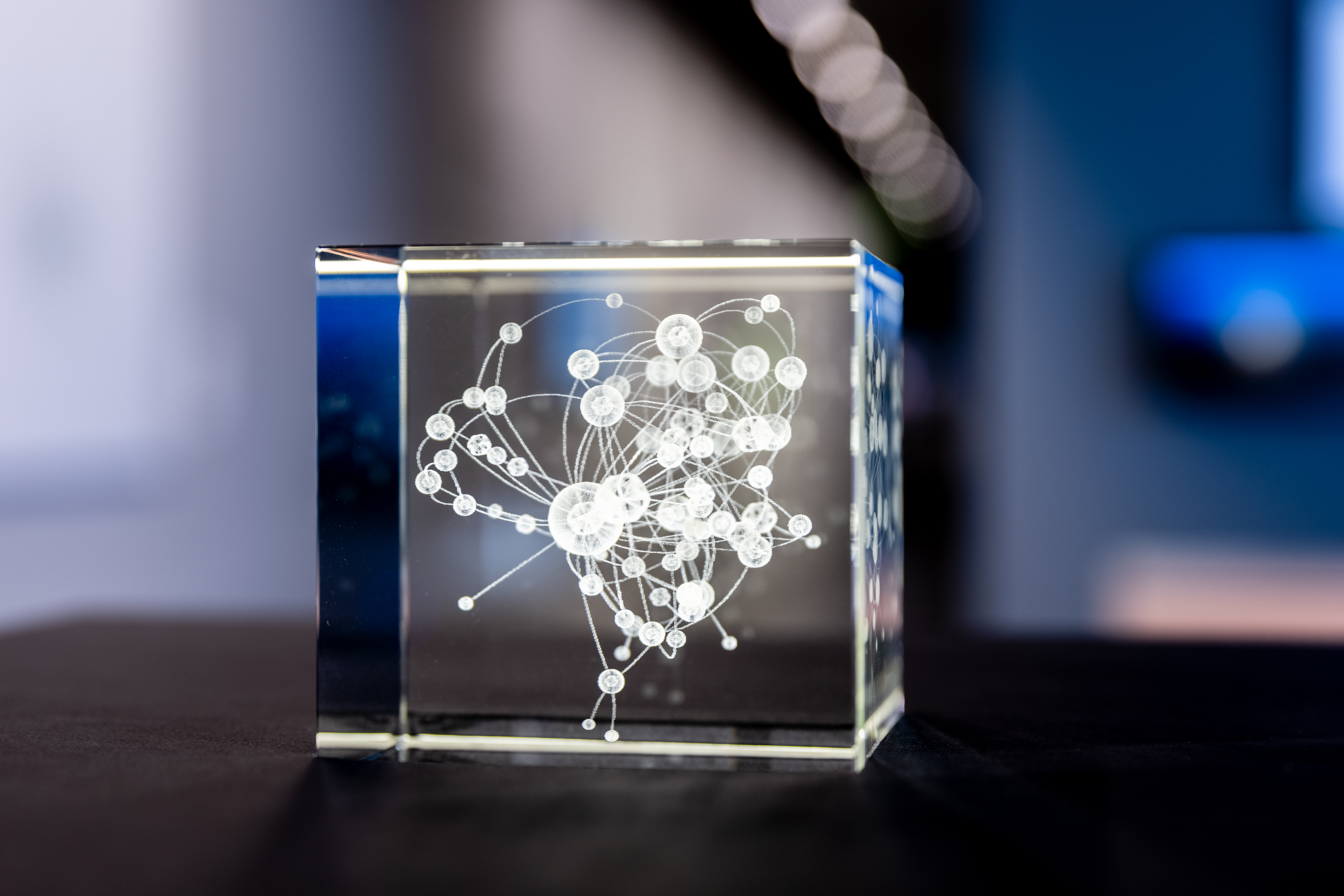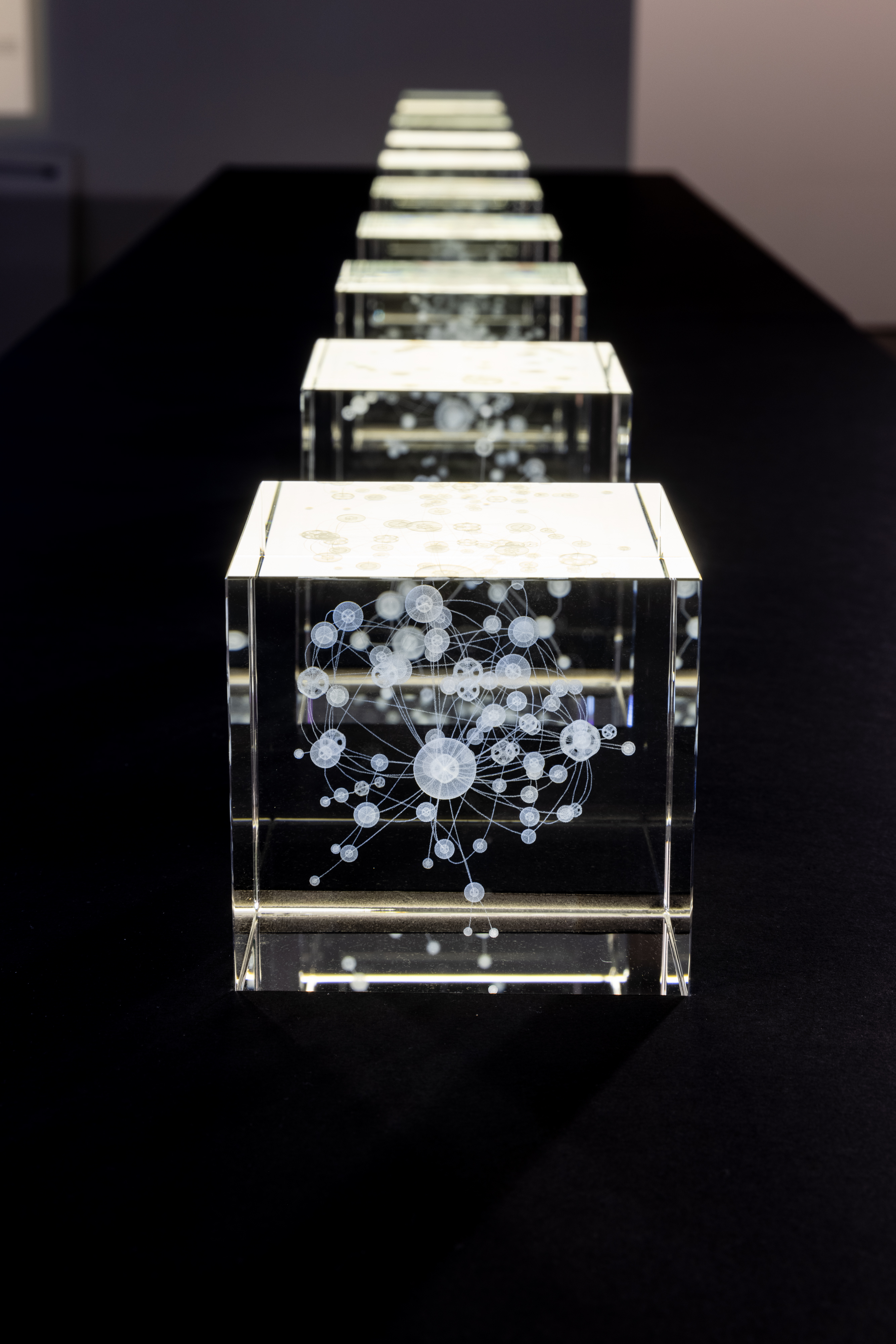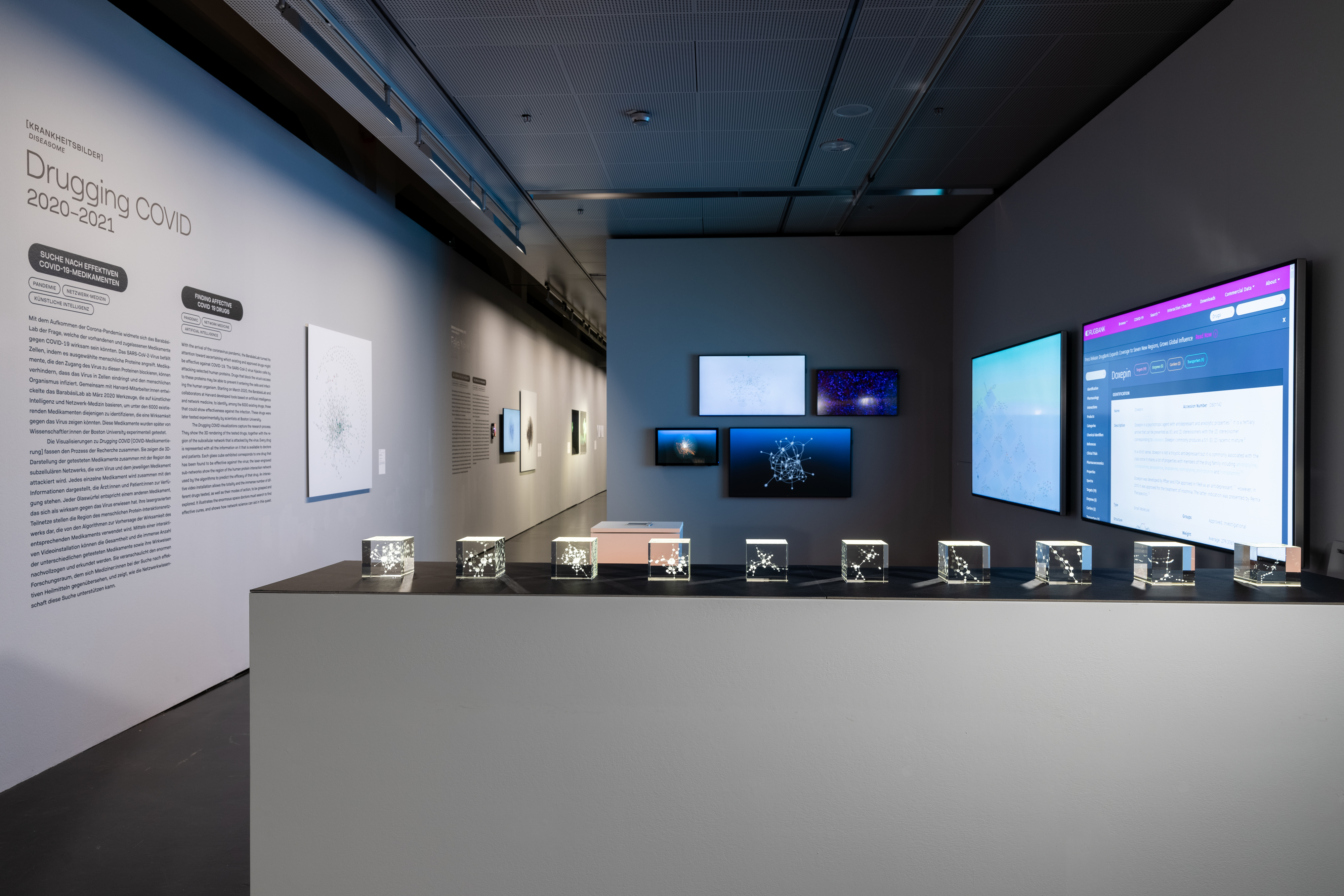The Drugging COVID visualizations capture the research process. They show the 3D rendering of the tested drugs, together with the region of the subcellular network that is attacked by the virus. Every drug is represented with all the information on it that is available to doctors and patients. Each glass cube exhibited corresponds to one drug that has been found to be effective against the virus; the laser-engraved sub-networks show the region of the human protein interaction network used by the algorithms to predict the efficacy of that drug. An interactive video installation allows the totality and the immense number of different drugs tested, as well as their modes of action, to be grasped and explored. It illustrates the enormous space doctors must search to find effective cures, and shows how network science can aid in this quest.
About the work
With the arrival of the coronavirus pandemic, the BarabásiLab turned its attention toward ascertaining which existing and approved drugs might be effective against COVID-19. The SARS-CoV-2 virus hijacks cells by attacking selected human proteins. Drugs that block the virus’s access to these proteins may be able to prevent it entering the cells and infecting the human organism. Starting on March 2020, the BarabásiLab and collaborators at Harvard developed tools based on artificial intelligence and network medicine, to identify, among the 6000 existing drugs, those that could show effectiveness against the infection. These drugs were later tested experimentally by scientists at Boston University.
Work Exhibitions
Team
Drugging COVID, by A.-L. Barabási, Cs. Both, A. Grishchenko, D. Gysi, published in D.M. Gysi, Í. Valle, M. Zitnik, A. Ameli, X. Gan, O. Varol, S.D. Ghiassian, JJ Patten, R. Davey, J, Loscalzo, A.-L. Barabási
Network Medicine Framework for Identifying Drug Repurposing Opportunities for COVID-19.











Contact
Social